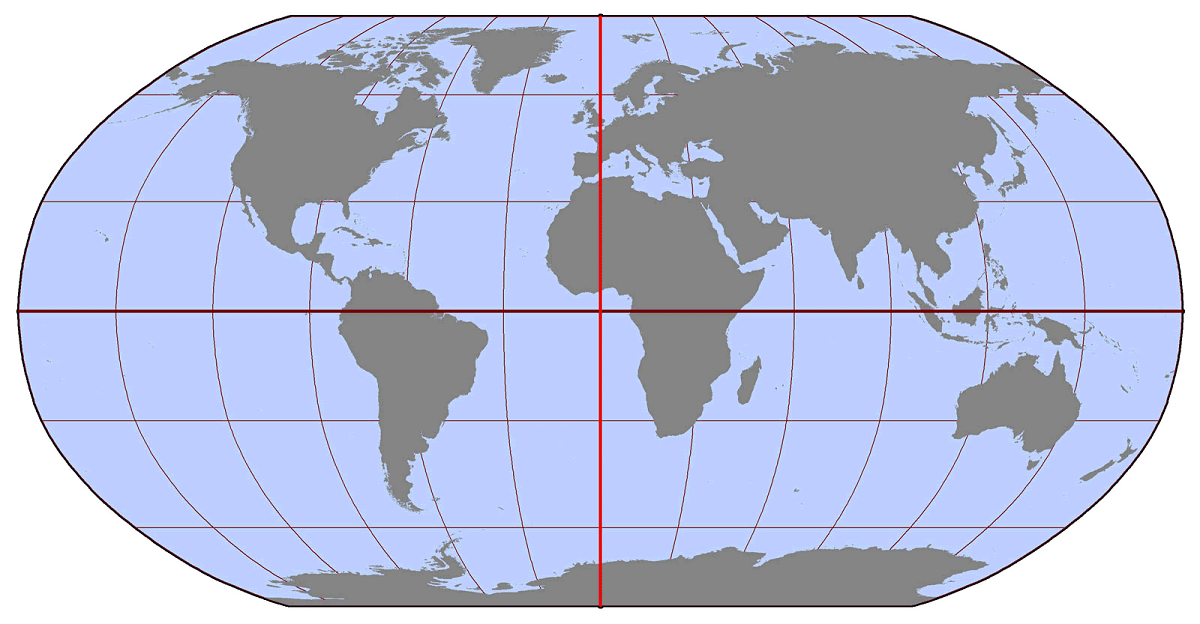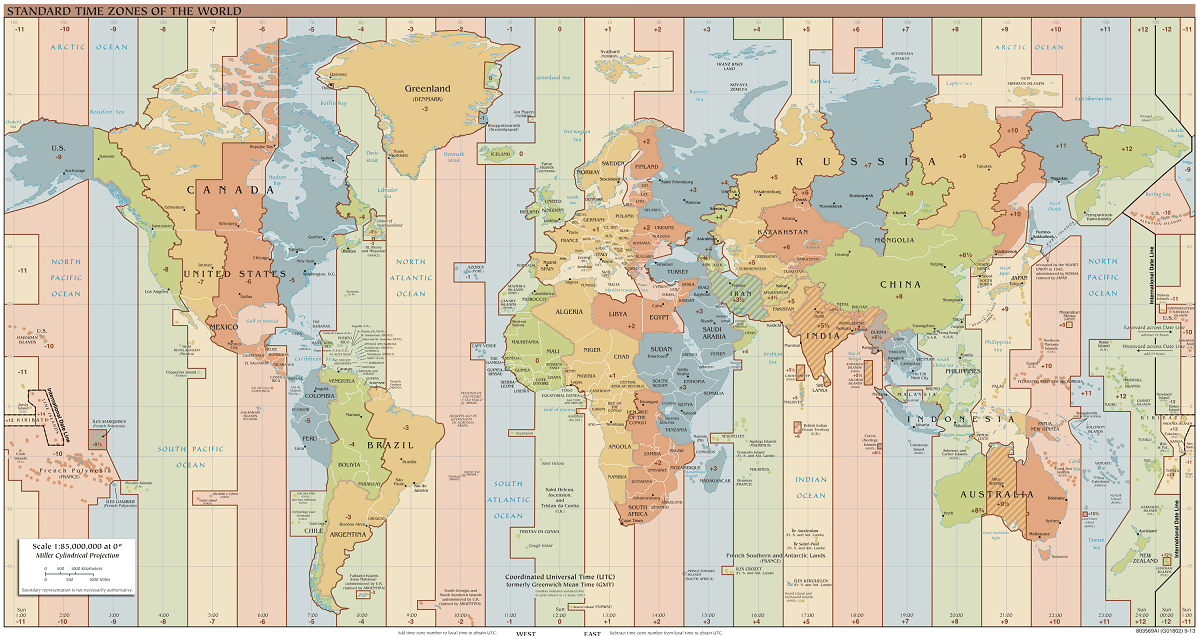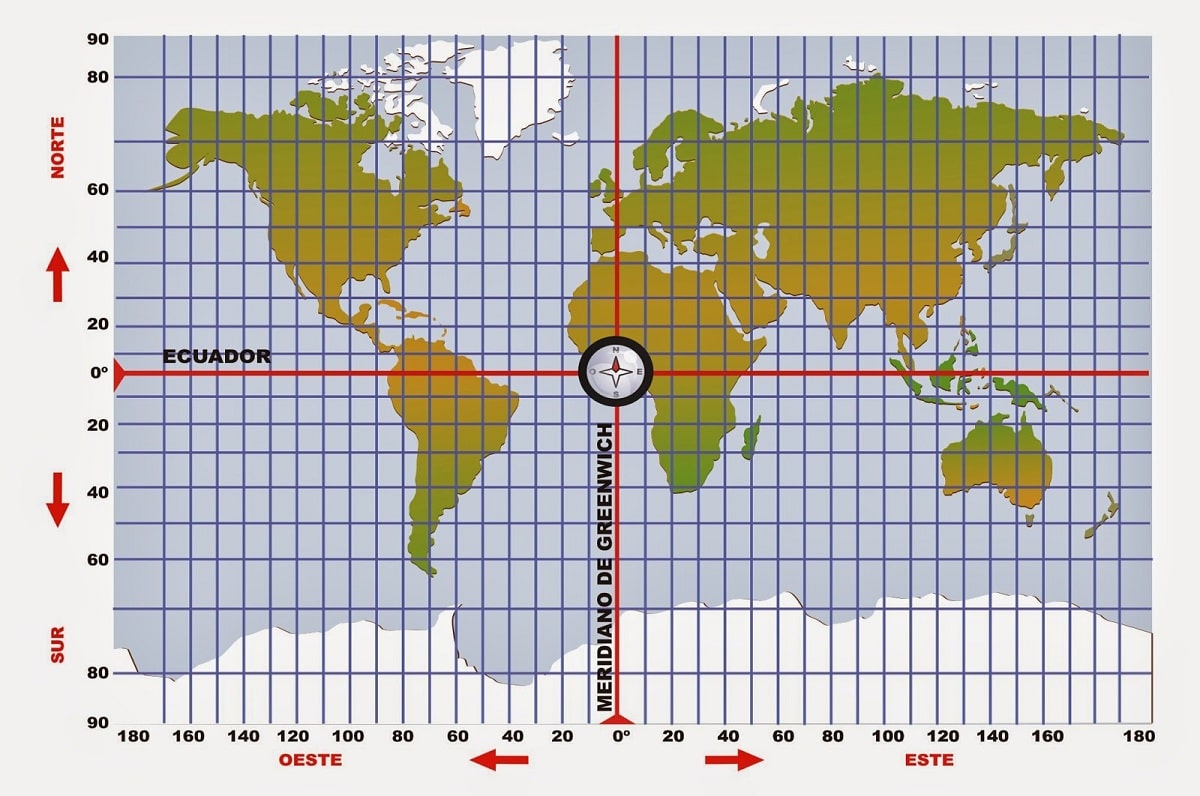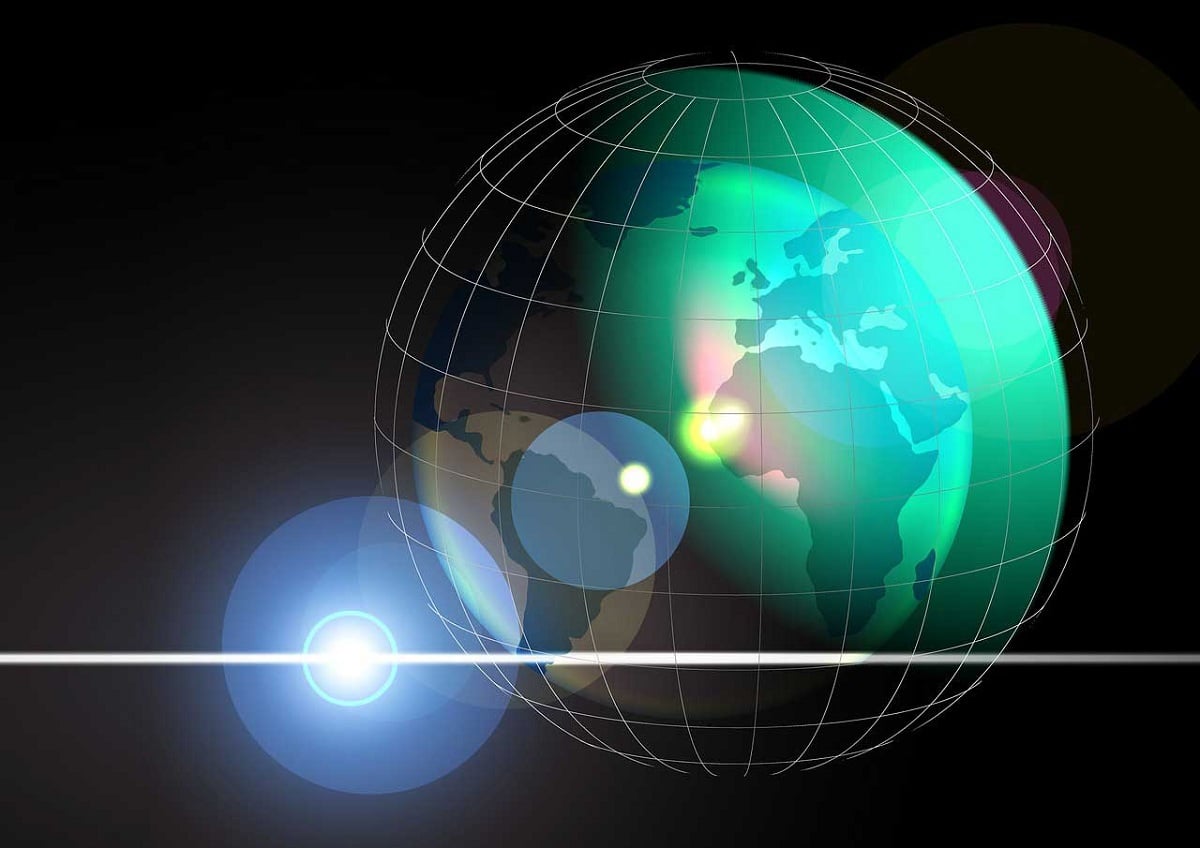
In order to divide our planet into geographical areas and to be able to identify the location of each area well, the Greenwich Meridian. It is an imaginary line that connects the North Pole with the South Pole of the Earth. It is the line responsible for dividing the globe into two hemispheres, the east and the west. This is how the Greenwich meridian serves as a worldwide reference to be able to set the time in all countries.
In this article we are going to tell you everything you need to know about the Greenwich meridian, its characteristics and what it is for.
What is the Greenwich meridian and what is it for

The best way to get to know the Greenwich Meridian is to go to London, which was born at the Royal Observatory in Greenwich, south of the British capital. The area is little known, but it is an ideal holiday destination for a trip to London in 3 days. The Royal Greenwich Observatory is a landmark for understanding when and why the Greenwich Meridian appears.
The Royal Greenwich Observatory held an exhibition on the importance of time, how the meridian was designed, and subsequent agreements by countries around the world to establish a time schedule through it. Also, from the promontory where the observatory is located, you can see an unusual view of London (as long as there is a sunny day).
The Greenwich Meridian is used to mark universal standard time. This is a convention, and it was agreed at Greenwich, because at the World Conference in 1884, it was determined to be the origin of the zero meridian. At that time, the British Empire was in its greatest period of expansion, and it was required to do so. If the empire at that time were another, today we would say a different place, such as the zero meridian. Starting from the Greenwich meridian, the time zone applicable to each country and region is configured.
The situation in European countries is strange because there are several time zones on the European continent, but according to Directive 2000/84, the countries that make up the European Union decided to maintain the same hours in all time zones to promote political and commercial operations. This tradition has been applied in many countries since World War I, when it was used as a way to save fuel. But the Greenwich meridian is always used as a reference.
The time change in winter occurs on the last Sunday in October and involves moving the clock forward one hour. On the other hand, the time change in summer occurs on the last Sunday in March, which means moving the clock forward one hour.
A Little History

The Royal Observatory at Greenwich was built by King Charles II in 1675, and he appointed John Franstead as his first Royal Astronomer. The objective is clear: to improve maritime navigation and to try to find a formula to calculate the distance. Until the XNUMXth century, Great Britain was a naval power, so finding more accurate and reliable navigation technology was a national matter for the country.
Until then, navigation was carried out with more or less precision, but there were always small (or large) errors, which could be very costly from a vital and economic point of view. However, in 1774, after the announcement of the contest, John Harrison, the carpenter who finally made the clock, proposed a system to accurately measure longitude (the distance between two meridians) on a map.
In terms of time measurement, the Royal Greenwich Observatory contains the world's prime meridian, and the rest of the meridians are drawn from this meridian and used as a reference to establish the time zone. Before the creation of the Greenwich Meridian, there were no conventions about the measurement of time or the beginning and end of the day. Despite the existence of a clock, hourly measurements They are performed very intuitively depending on the sunlight. However, the deployment of the railways and the development of communications in the XNUMXth century forced the establishment of a universal time measurement system that guarantees punctuality and precision.
Where you are in Spain

The birth point of the Greenwich meridian is London. As we noted earlier, this meridian connects the north and south poles, thus encompassing several countries and several points. For example, the Greenwich meridian passes through the Spanish city of Castellón de la Plana. Another sign for the Meridiano crossing is found on the 82.500 kilometers of the AP-2 motorway in Huesca.
But, in fact, the Meridian runs through almost the whole of eastern Spain, from its entry into the Pyrenees to its exit through the El Serrallo refinery in Castellón de la Plana.
Historical value of the Greenwich meridian
Greenwich has some attractions that are worth seeing. The Royal Observatory is located in the park of the same name, which is also home to other cultural spaces little known to visitors to London. As we said earlier, Great Britain was a maritime power until the XNUMXth century. The National Maritime Museum is located in this part of the city and tells the story of privateers and the conquest of British ships. Of course, this is the most official story, because few people mention that the British royal family paid British pirates to cooperate in the harassment and looting of ships from other countries such as Spain.
The museum has replicas of ships, documents, etc., which appeal to lovers of the sea and those who wish to learn more about the history of the British nation.
As a tribute to the Spanish, the museum exhibits the costume of the British hero Admiral Horatio Nelson. He died at the Battle of Trafalgar in 1805. Although he won the battle, the British participated in this battle. Disputed with teams from France and Spain. War of Independence of Spain against Napoleon.
I hope that with this information you can learn more about the Greenwich meridian and its characteristics.